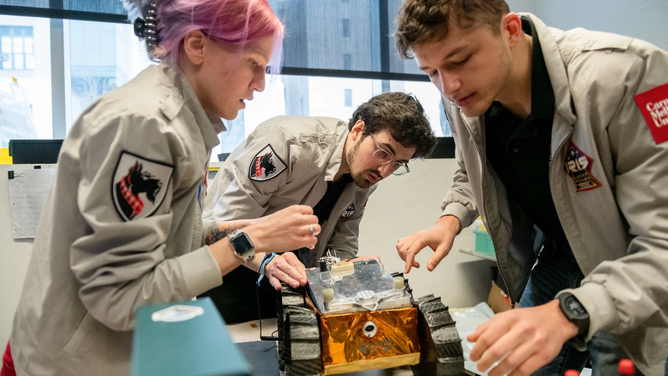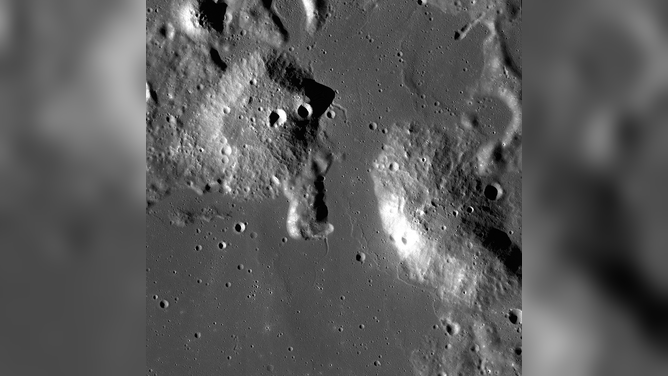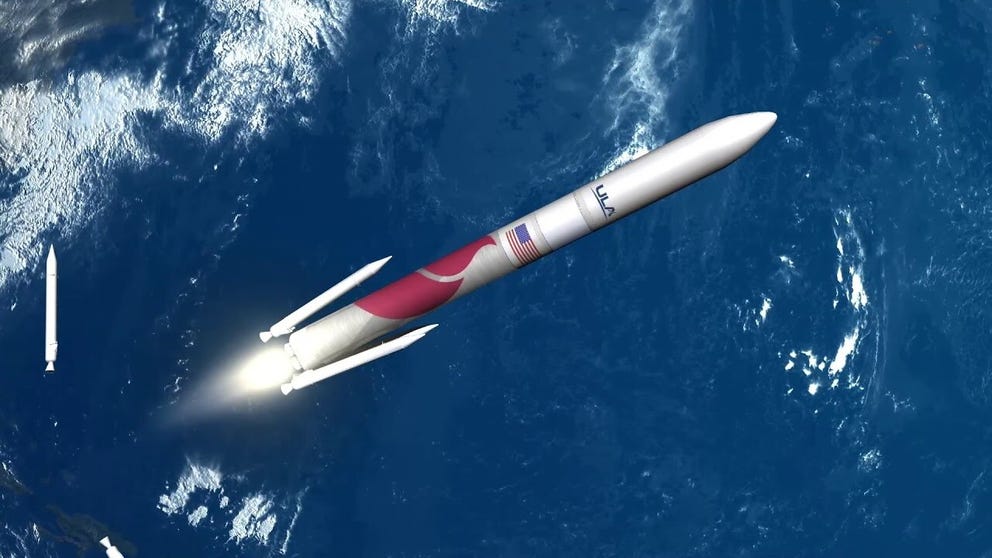First Vulcan rocket launch sends American Moon lander on journey to lunar surface
The first launch of ULA’s Vulcan rocket began the Peregrine Moon lander's journey to the lunar surface. However, hours after liftoff the robotic mission is facing its first problem putting a Moon landing at risk.
United Launch Alliance Vulcan Centaur rocket preview
The United Launch Alliance is preparing to launch the new Vulcan Centaur rocket from Cape Canaveral, Florida.
KENNEDY SPACE CENTER, Fla. – A Vulcan rocket roared to life early Monday for the first time, launching a lunar lander from a private Pittsburgh-based company carrying NASA science and other payloads to the Moon.
United Launch Alliance achieved its first successful launch of the new Vulcan Centaur rocket at 2:18 a.m. EST from Cape Canaveral, Florida, kicking off a series of firsts for ULA, NASA and space robotics company Astrobotic.
With the liftoff, the Astrobotic’s Peregrine lander began its six-week journey to the Moon’s south pole. If the robot makes a soft landing as planned in late February, it will mark the first commercial company to land on the Moon successfully and the first American landing on the lunar surface since the Apollo program.
Astrobotic CEO John Thornton smiled ear to ear after the launch, saying it was "a dream" to see the launch finally happen.
"This is the moment we’ve been waiting for 16 years," Thornton said. "We are on our way to the moon."
The mission is also a first for NASA’s Commercial Lunar Payload Services (CLPS) program. Instead of building and managing its own missions to the Moon, the space agency awarded contracts to American companies to fly NASA lunar science.
HUMAN ASHES, PET HAIR AMONG ITEMS HEADED TO MOON ON MONDAY LAUNCH
ULA has been working toward Monday’s launch for more than a decade with the development of the Vulcan rocket, designed to replace its workhorse rocket, the Atlas V. While it was the first launch of Vulcan, the liftoff was the 159th overall for the company.
Monday’s lunar launch was an important milestone for ULA with its first test flight of Vulcan and the first spaceflight for the BE-4 rocket engines developed by Jeff Bezos's company Blue Origin. The same engines will power Blue Origin’s New Glenn rocket, which is set to begin launching from Florida later this year.
Tiny rovers, pet hair and human ashes headed to the Moon
Peregrine will carry and power over 20 payloads, including five NASA science missions.
Other items launching on Peregrine include a half-dozen small Moon rovers, a time capsule shaped like a Japanese sports drink and a token from Pittsburgh amusement park Kennywood.
Astrobotic partnered with global shipping company DHL to sell space on the lander for people to send small items to the Moon.

Members of the Iris team work on assembling an earlier model of the Iris rover for the afternoon demo during Iris Rover Media Day in the Mission Control Room of Gates on Tuesday, April 4, 2023.
(Carnegie Mellon University)
Space memorial companies Celestis and Elysium Space have also purchased space on the Peregrine lander. Human ashes and hair samples from three former U.S. presidents – George Washington, John F. Kennedy and Dwight D. Eisenhower – are included in the Celestis memorial payload.
LATE 'STAR TREK' ACTRESS NICHELLE NICHOLS TO GRACE ONE FINAL VOYAGE INTO THE COSMOS
Carnegie Mellon University staff and students developed the tiny Iris Lunar Rover flying on Peregrine.
Iris mission operations lead and current CMU post-graduate student Divya Rao was in Florida for the launch with a group of current and former Iris team members, some of whom have worked on the rover since its conception over the past nine years.
"It was 1,000 different emotions," said Rao, of seeing the launch. "This is real, this is happening. Iris is heading to the Moon."
Once it lands and begins operations, the shoebox-sized rover will investigate Moon dirt, also known as regolith. About 30 people are part of the Iris mission operations team, which is mostly made up of students. Rao said it's a rare opportunity for university students to be part of a mission to the Moon.
"When I first joined CMU, I had no idea I would be able to do something like this," Rao said.
Iris is one of six small rovers headed to the Moon on this mission. The Mexican Space Agency is sending five miniature rovers weighing less than 60 grams each for a demonstration mission on the lunar surface.
Problem detected on cruise to the Moon

This is an image of the Gruithuisen Domes, taken by the Lunar Reconnaissance Orbiter. Image Credit: NASA/GSFC/Arizona State University
(NASA)
Hours into the spaceflight Astrobotic was facing its first mission-critical issue which could threaten the Moon landing attempt.
"Unfortunately, an anomaly occurred, which prevented Astrobotic from achieving a stable sun-pointing orientation," Astrobotic said in a statement. "The team is responding in real-time as the situation unfolds and will be providing updates as data is obtained and analyzed."
The Peregrine spacecraft needs sunlight in order to maintain power. Astrobotic said the spacecraft was already at low battery levels.
Now out of Earth’s orbit, the Peregrine spacecraft will communicate through NASA’s Deep Space Network as it navigates toward the lunar surface over the next six weeks.
If Peregrine completes the 238,000-mile journey, it will use the Doppler LiDAR to guide itself to land on four legs at the Bay of Stickiness near the geologically rich area of the Gruithuisen Domes. NASA scientists are interested in this region near the lunar south pole because it’s believed to contain volatiles, including water ice.
Astrobotic was among the 14 private companies selected under NASA’s CLPS initiative to deliver science to the Moon ahead of the first Artemis astronaut missions to the lunar south pole in late 2025. Next month, another NASA CLPS contractor, Houston-based company Intuitive Machines, will launch its moon lander with SpaceX.






